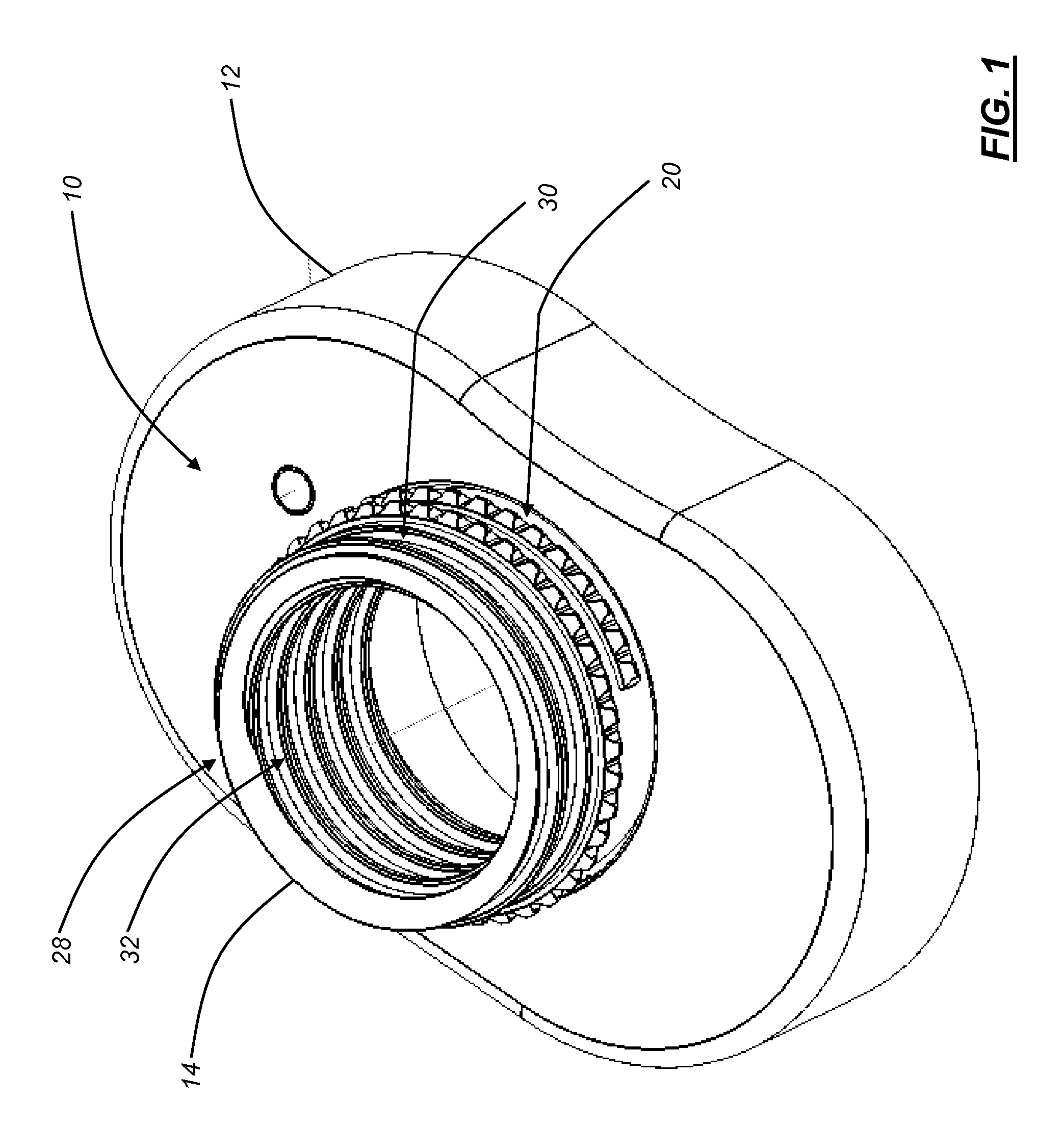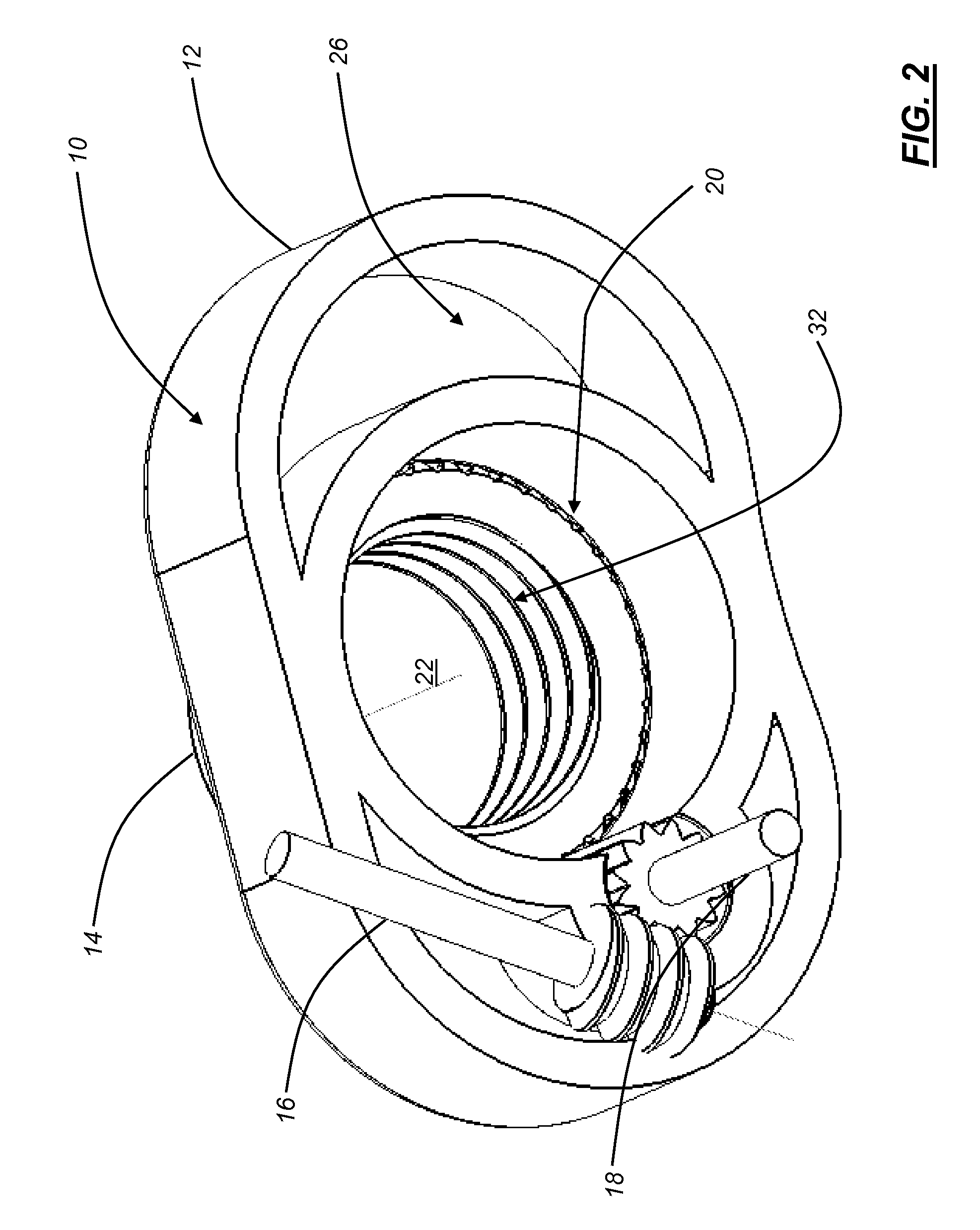Anterior lumbar interbody fusion cage device and associated method
a technology of lumbar interbody fusion and cage device, which is applied in the field of anterior lumbar interbody fusion cage device and associated method, can solve the problems of inability to adequately maintain the normal height of the intervertebral space, and achieve the effect of constant cross-sectional shape and constant cross-sectional shap
- Summary
- Abstract
- Description
- Claims
- Application Information
AI Technical Summary
Benefits of technology
Problems solved by technology
Method used
Image
Examples
Embodiment Construction
[0016]Referring to FIG. 1, in one exemplary embodiment, the ALIF cage device 10 of the present invention includes a housing 12 and one or more extensible threaded retention pipe structures 14 that are selectively deployed into one or more endplates of adjacent vertebrae once the ALIF cage device 10 is disposed in an intervertebral space of interest. It should be noted that only the top half of the ALIF cage device 10 is illustrated herein (i.e. the top half of the housing 12 and the top extensible threaded retention pipe structure 14). The bottom half of the ALIF cage device 10 is substantially identical, including the bottom half of the housing 12 and the bottom extensible threaded retention pipe structure 14, when used. The top and bottom halves of the ALIF cage device 10 (i.e. the top and bottom halves of the housing 12) are joined during the manufacturing process or prior to implantation to form an integrated whole. A bone graft is disposed within the housing 12 and the extensib...
PUM
 Login to View More
Login to View More Abstract
Description
Claims
Application Information
 Login to View More
Login to View More - R&D
- Intellectual Property
- Life Sciences
- Materials
- Tech Scout
- Unparalleled Data Quality
- Higher Quality Content
- 60% Fewer Hallucinations
Browse by: Latest US Patents, China's latest patents, Technical Efficacy Thesaurus, Application Domain, Technology Topic, Popular Technical Reports.
© 2025 PatSnap. All rights reserved.Legal|Privacy policy|Modern Slavery Act Transparency Statement|Sitemap|About US| Contact US: help@patsnap.com



